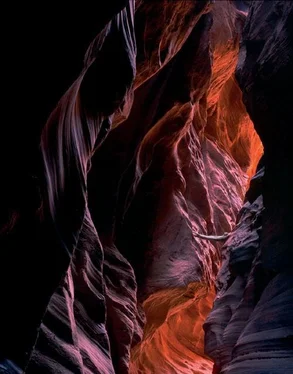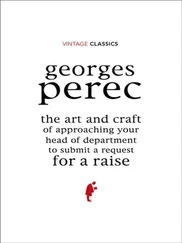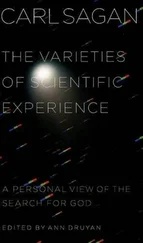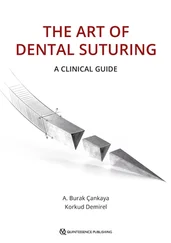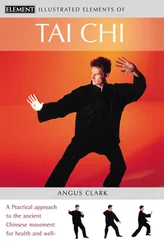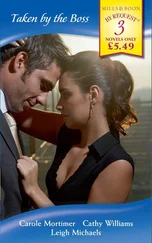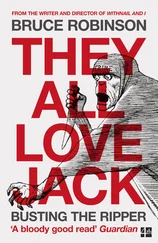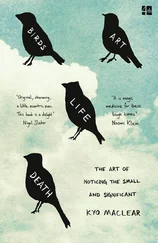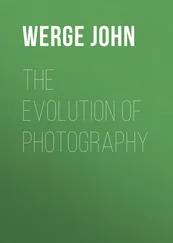Bruce Barnbaum - The Art of Photography - An Approach to Personal Expression
Здесь есть возможность читать онлайн «Bruce Barnbaum - The Art of Photography - An Approach to Personal Expression» весь текст электронной книги совершенно бесплатно (целиком полную версию без сокращений). В некоторых случаях можно слушать аудио, скачать через торрент в формате fb2 и присутствует краткое содержание. Жанр: Старинная литература, на английском языке. Описание произведения, (предисловие) а так же отзывы посетителей доступны на портале библиотеки ЛибКат.
- Название:The Art of Photography: An Approach to Personal Expression
- Автор:
- Жанр:
- Год:неизвестен
- ISBN:нет данных
- Рейтинг книги:5 / 5. Голосов: 1
-
Избранное:Добавить в избранное
- Отзывы:
-
Ваша оценка:
- 100
- 1
- 2
- 3
- 4
- 5
The Art of Photography: An Approach to Personal Expression: краткое содержание, описание и аннотация
Предлагаем к чтению аннотацию, описание, краткое содержание или предисловие (зависит от того, что написал сам автор книги «The Art of Photography: An Approach to Personal Expression»). Если вы не нашли необходимую информацию о книге — напишите в комментариях, мы постараемся отыскать её.
The Art of Photography: An Approach to Personal Expression — читать онлайн бесплатно полную книгу (весь текст) целиком
Ниже представлен текст книги, разбитый по страницам. Система сохранения места последней прочитанной страницы, позволяет с удобством читать онлайн бесплатно книгу «The Art of Photography: An Approach to Personal Expression», без необходимости каждый раз заново искать на чём Вы остановились. Поставьте закладку, и сможете в любой момент перейти на страницу, на которой закончили чтение.
Интервал:
Закладка:
On the sphere, as on the wheel, a family of related colors corresponds to a wedge-shaped piece cut out from the surface to the axis, as you would section an apple or an orange. Opposite colors or opposite families of colors are simply wedges cut from the opposite side of the central axis.
Note
The eye will jump toward an opposite color within a composition just as quickly as it will jump to a white within dominant dark tones, or black within dominant light tones in a black-and-white photograph.
Color Composition
With an understanding of the color wheel and sphere, let’s look at the issues to consider when creating color photographs. All of the compositional considerations discussed in Chapter 3—line, form, pattern, balance, movement, etc.—apply to color as well as black-and-white. Color adds a dimension to the elements of composition that has no black-and-white equivalent.
Lines of color are just as attracting to the eye in a color photograph as tonal lines in black-and-white photography. The intensities of related colors and their placement within the frame must be considered with care and sensitivity in order to make the photograph say what you want it to say. The degree of saturation of the colors along with their depth of hue (e.g., whether they are dark and highly saturated, high key and pastel, or relatively midway between the two extremes) makes an immense difference to the overall character of the photograph.
Furthermore, the eye will jump toward an opposite color within a composition just as quickly as it will jump to a white within dominant dark tones, or a black within dominant light tones in a black-and-white photograph. For example, if you photographed green foliage in a forest, but there was a cardinal perched on one of the branches, the viewer’s eye would immediately dart to that spot of intense red amidst the sea of green. The bird and the foliage may be exactly the same tone in a black-and-white image, but color separates them dramatically. The dramatic power of an opposite color, and its location within a composition, must be one of your prime considerations when you begin composing a color photograph. If you want a quiet, subtle mood, a sharp color contrast may be too powerful, too overwhelming. But if you’re looking for drama, it may be exactly what you want.
Let’s consider another hypothetical example. Suppose there is an area of red in the lower right of the image (not necessarily the cardinal, but any red object). Are there other reds, perhaps reds of less intense saturation, or alternatively red-oranges, magentas, or other similar colors within the image that relate to the red object in the lower right? If not, can such a color relationship be arranged, perhaps by changing the camera position? Is it desirable to have that solitary red object stand alone, unrelated to any other color in the frame? What element of composition ties the lower right area to the rest of the scene? In other words, does it relate compositionally to the rest of the image?
Unless a related form of a different color (or several such related forms) exists, or a strong line leads from that lower right area to elsewhere in the image, that corner of the photograph will be heavily imbalanced. It will not relate visually to the rest of the image, but rather stand apart and draw your eye strongly to it. Of course this may be your intent, but you should be aware of this effect. It can create either a powerful contrast or a harmful distraction.
Too many color compositions include unfortunate distractions because they were attractive to the eye at the scene. The simple expedient of turning the camera so the object is farther away from the corner or edge can relieve the imbalance and improve the image, but only if the elements around it add visual interest and work well in relationship to it. Sometimes a small spot of a related color elsewhere in the image sets up a powerful visual relationship that is enough to balance it successfully.
Camera position can change a random array of colors into an organized composition with interesting lines, patterns, color placements, and color relationships. Resist the urge to quickly shoot a scene that has pleasing colors. Instead, see where your camera can be placed to move the eye around related colors in a directed fashion, or reveal a subtle pattern or visual rhythm not seen from any other viewpoint.
In 2004, as I hiked along the Escalante River, I found a fallen juniper tree with wonderful patterns in the wood. From one exacting viewpoint, a marvelous pinwheel form emerged that brought out the superb coloration and became an abstract painting (Figure 6-7). For studio compositions and often for close-ups, objects can be moved relative to one another to enhance color relationships. But whether the composition is indoors or outdoors, arranged or found, colors, line, and light can (and should!) be used to direct the viewer’s eye.
Repetitions and subtle echoes of color throughout an image set up visual rhythms. They help tie the image together as a unified whole. They must be sought and considered from the start. Too often color is included in a photograph simply because it’s there, without adequate consideration given to its placement within the scene. You may not be able to rearrange the objects and their colors, but a change in camera position can alter their relative positions with respect to one another and may be sufficient to bring about greater compositional interest (Figure 6-8).
The eye will follow a series of color-related objects in the same way that it follows a series of related forms in black-and-white. Just as related forms of the same tonality—or even different tonalities—can produce interesting visual rhythms in a black-and-white composition, related forms of different colors—or of different but related hues or saturation levels of the same color—can produce exciting visual rhythms in color photographs. Such visual rhythms should be sought out or exploited whenever you find them, for they are so visually revealing and appealing. These are the things that can open up new vistas to the viewer, who may have subliminally seen such relationships in passing without ever stopping to really notice or think about them. Now, you’re pointing them out! The viewer instantly sees what he or she has never consciously seen or thought about previously. You’re expanding the viewer’s horizons. That’s an achievement, and it shows that you have the eye to notice such things and bring them to the fore.

This is a truly abstract form that could accommodate a wide range of colors. Yet the colors that were actually present could hardly be improved upon, so I made no effort to change them. Only from this camera position did the pinwheel form come across so boldly.
Figure 6-7. Juniper Pinwheel
Positive/negative space, discussed in Chapter 3 as the interplay between light and dark areas of the image, has an interesting extension in color. Not only will light and dark areas create positive/negative interactions, but alterations of color may do it equally well. One family of colors interacting with a contrasting family of colors may set up a fascinating positive/negative interaction. If the two families are opposites (e.g., blue and orange or red and green), the interplay can be vibrant and scintillating; if the two families are closer together, it can be quiet and subtle.

Yellow golds dominate this image, yet subtle variations into browns (toward the bottom) and greens (toward the top) create a visual flow. It’s the light streaming around the trees and the strong shadows that create the movement. Kodak Ektachrome 64T film held the high contrast of the scene so that the near side of the trees retains a wonderful glow, despite being shaded.
Читать дальшеИнтервал:
Закладка:
Похожие книги на «The Art of Photography: An Approach to Personal Expression»
Представляем Вашему вниманию похожие книги на «The Art of Photography: An Approach to Personal Expression» списком для выбора. Мы отобрали схожую по названию и смыслу литературу в надежде предоставить читателям больше вариантов отыскать новые, интересные, ещё непрочитанные произведения.
Обсуждение, отзывы о книге «The Art of Photography: An Approach to Personal Expression» и просто собственные мнения читателей. Оставьте ваши комментарии, напишите, что Вы думаете о произведении, его смысле или главных героях. Укажите что конкретно понравилось, а что нет, и почему Вы так считаете.
